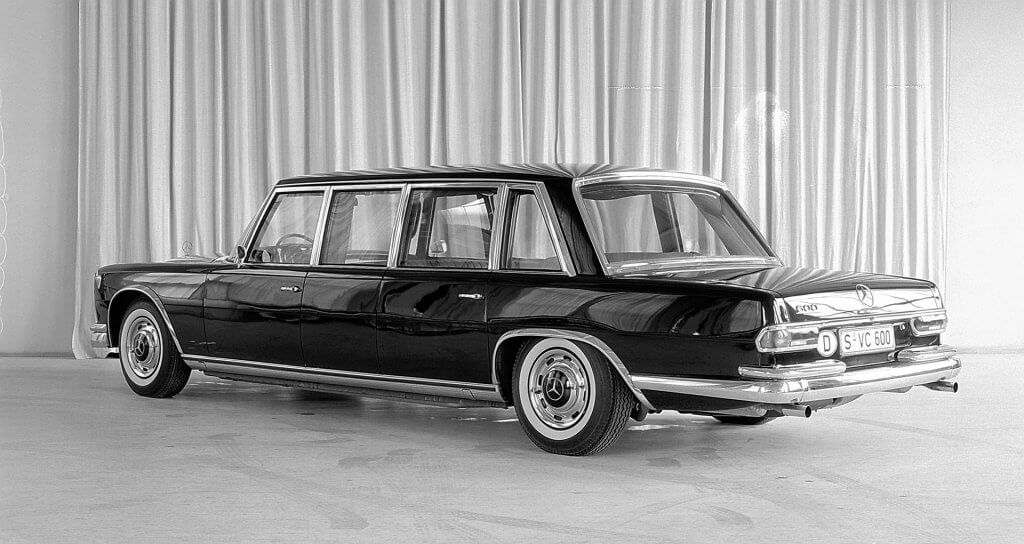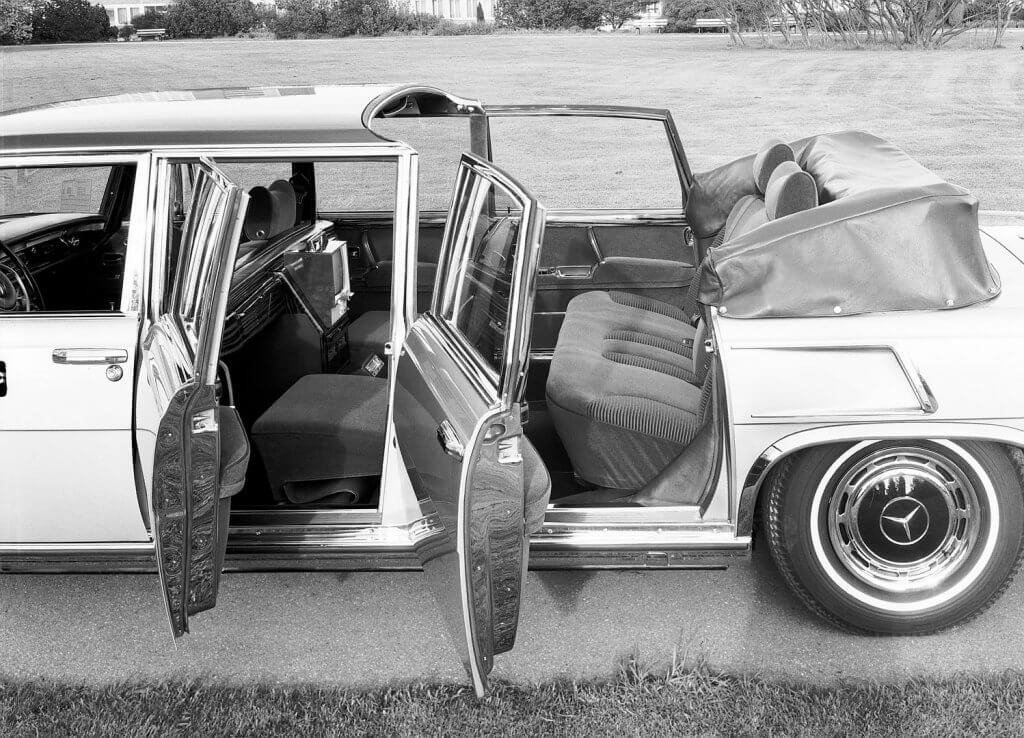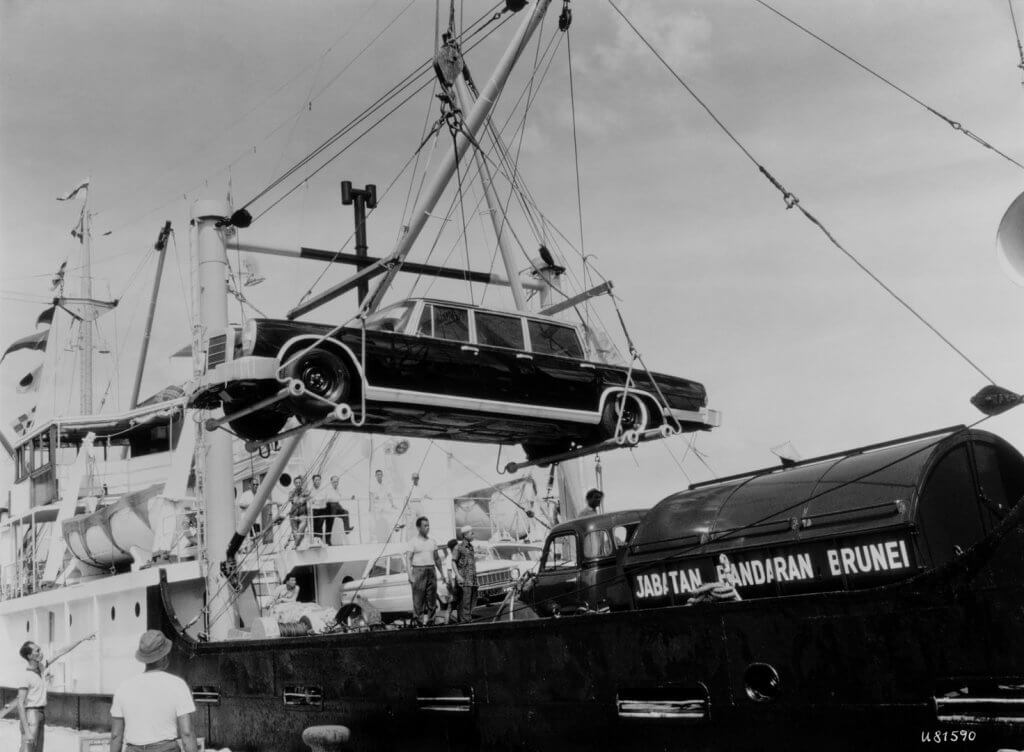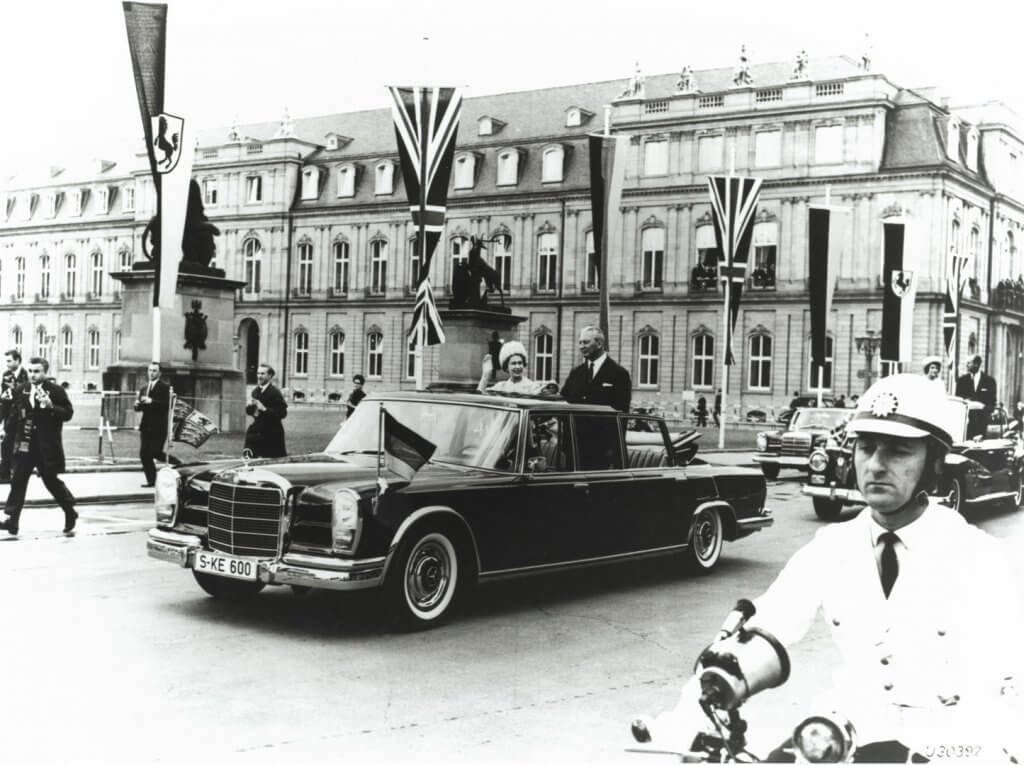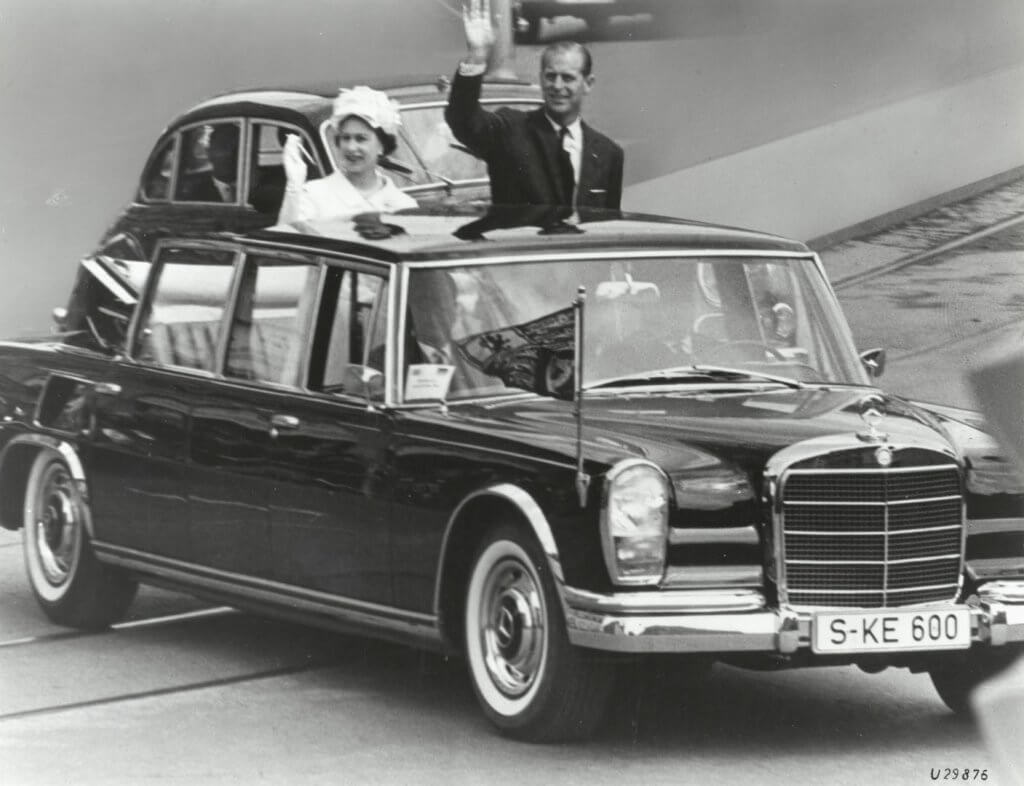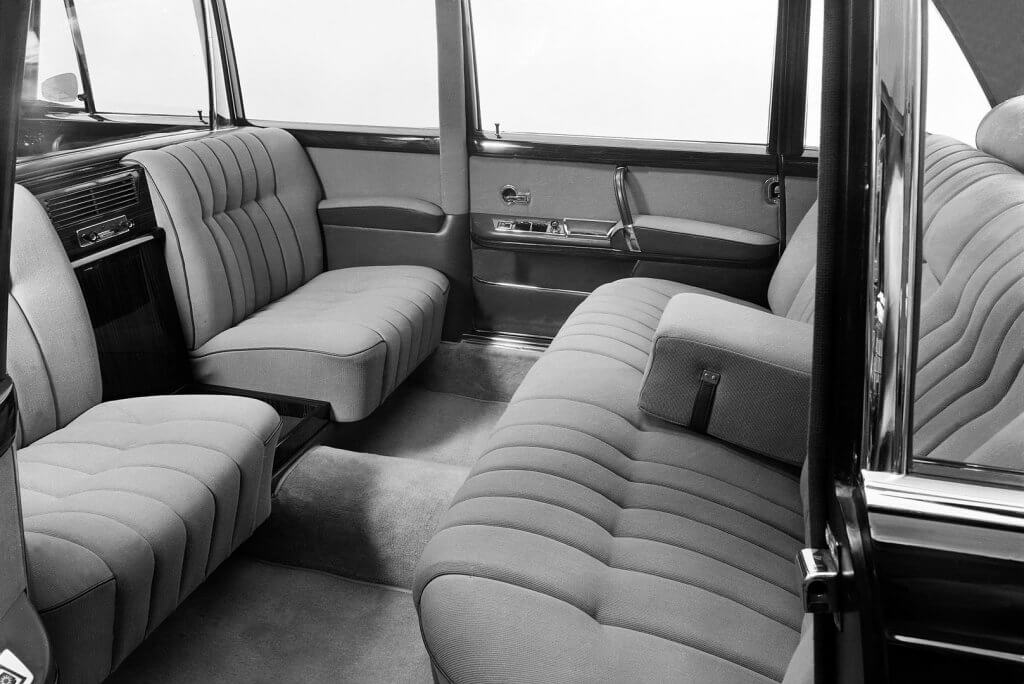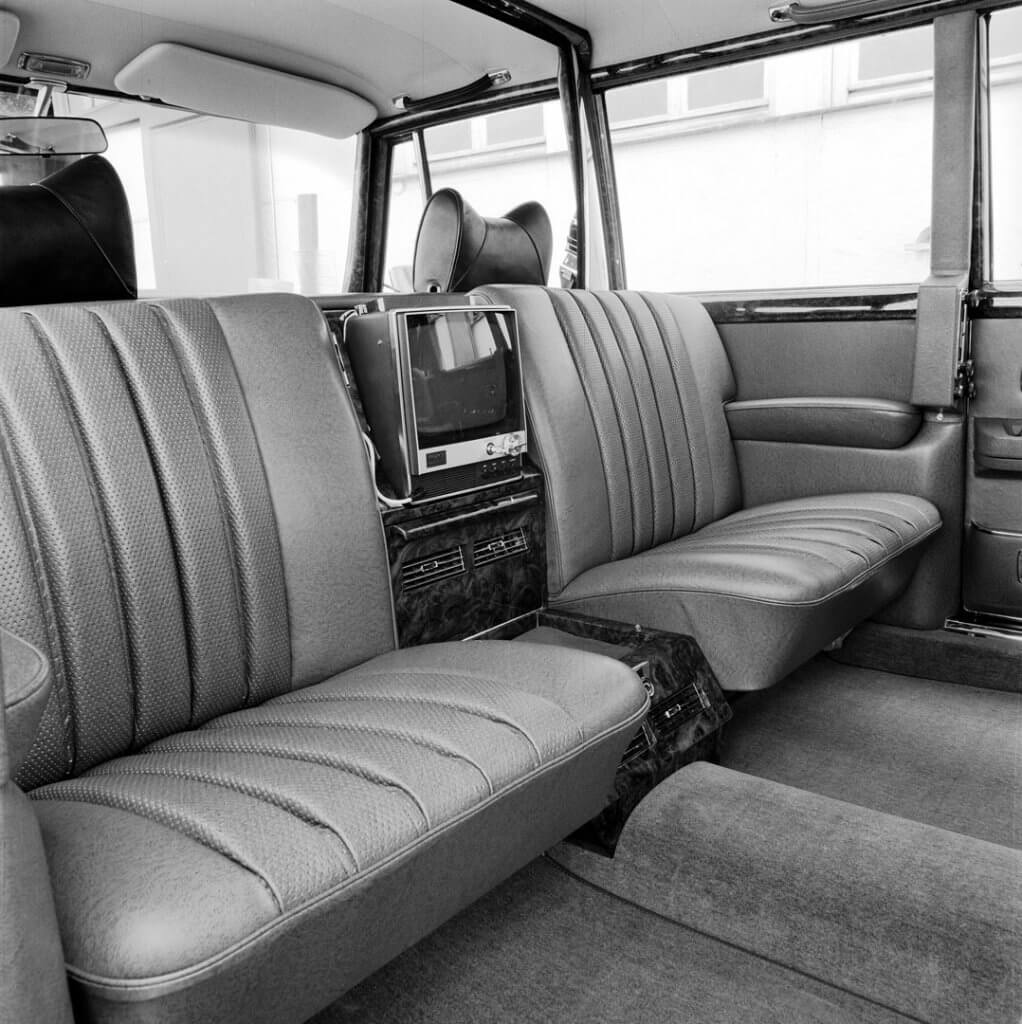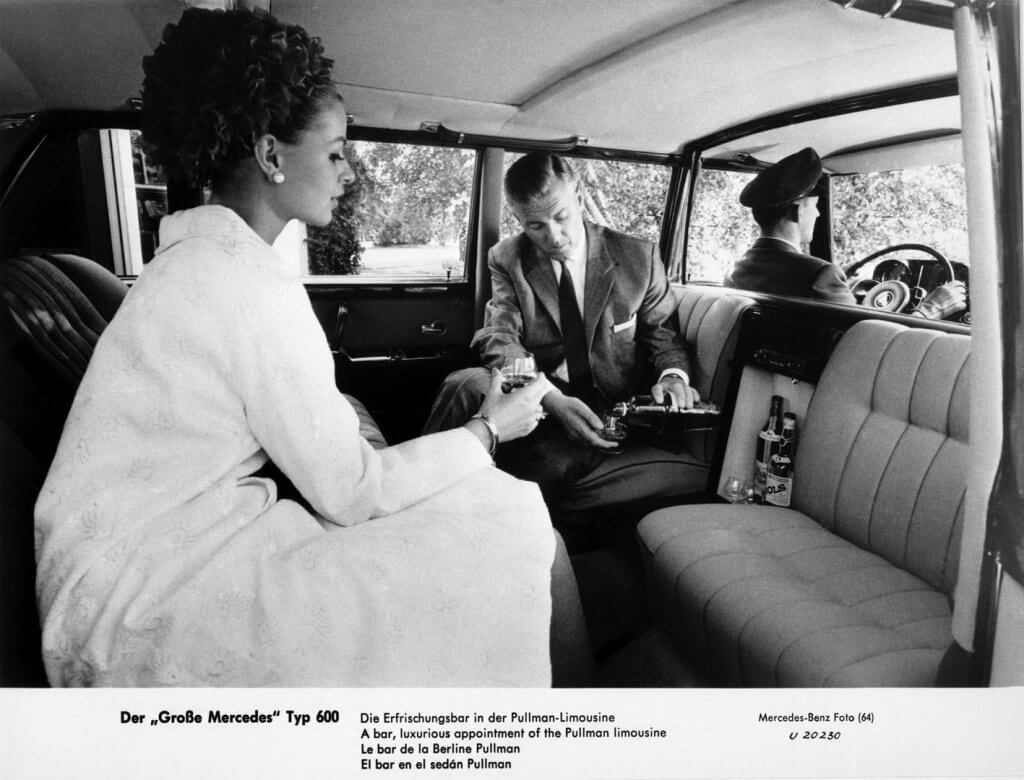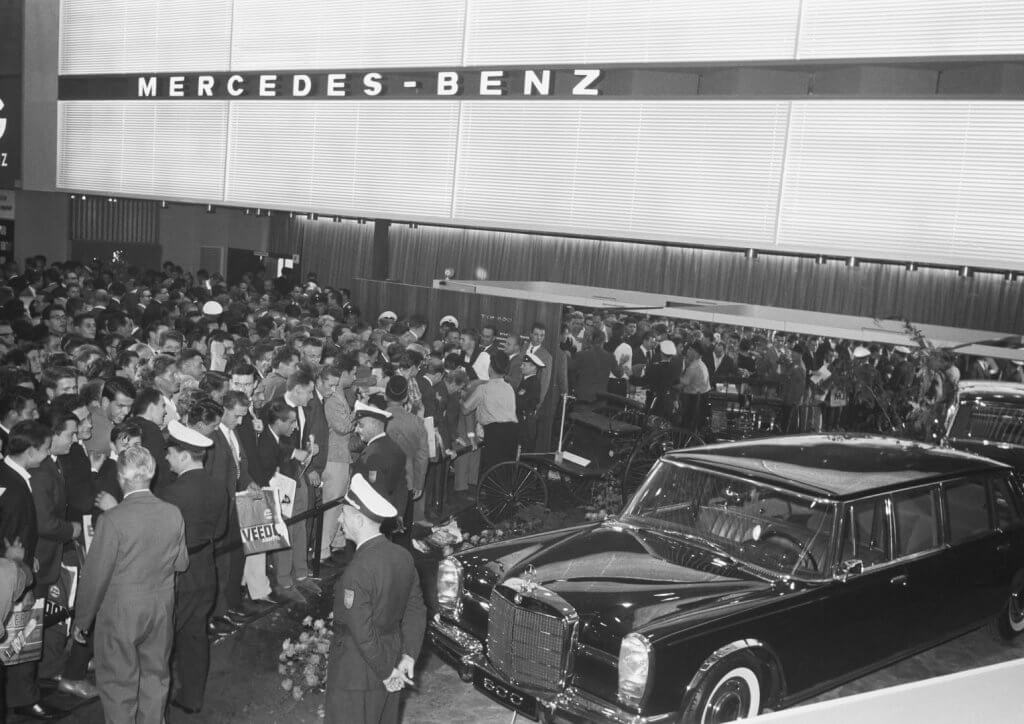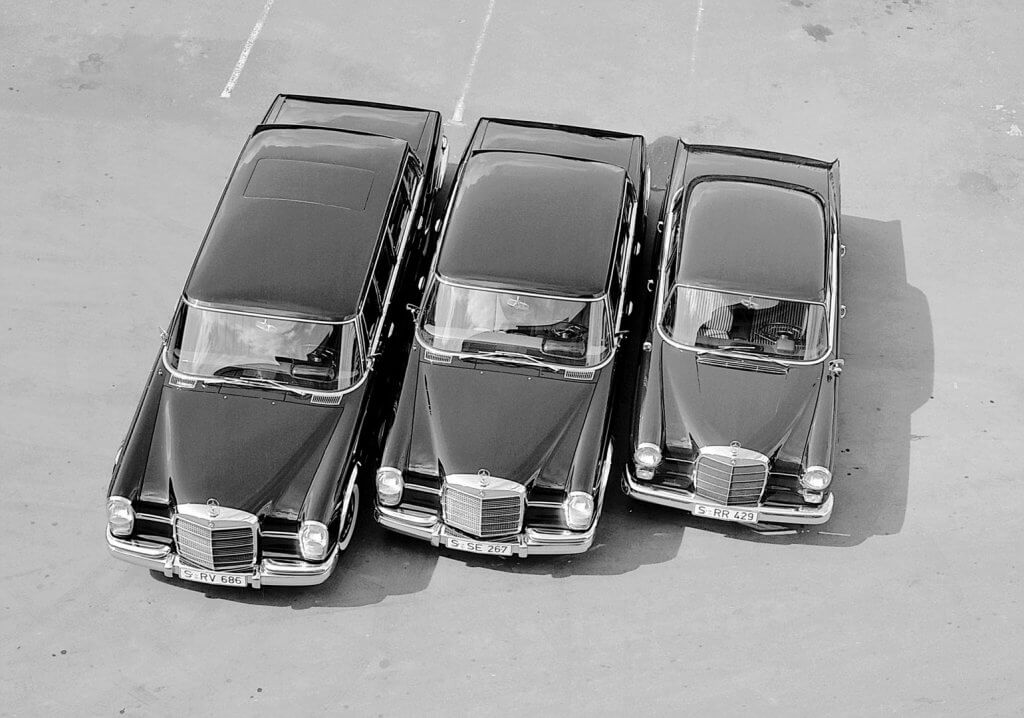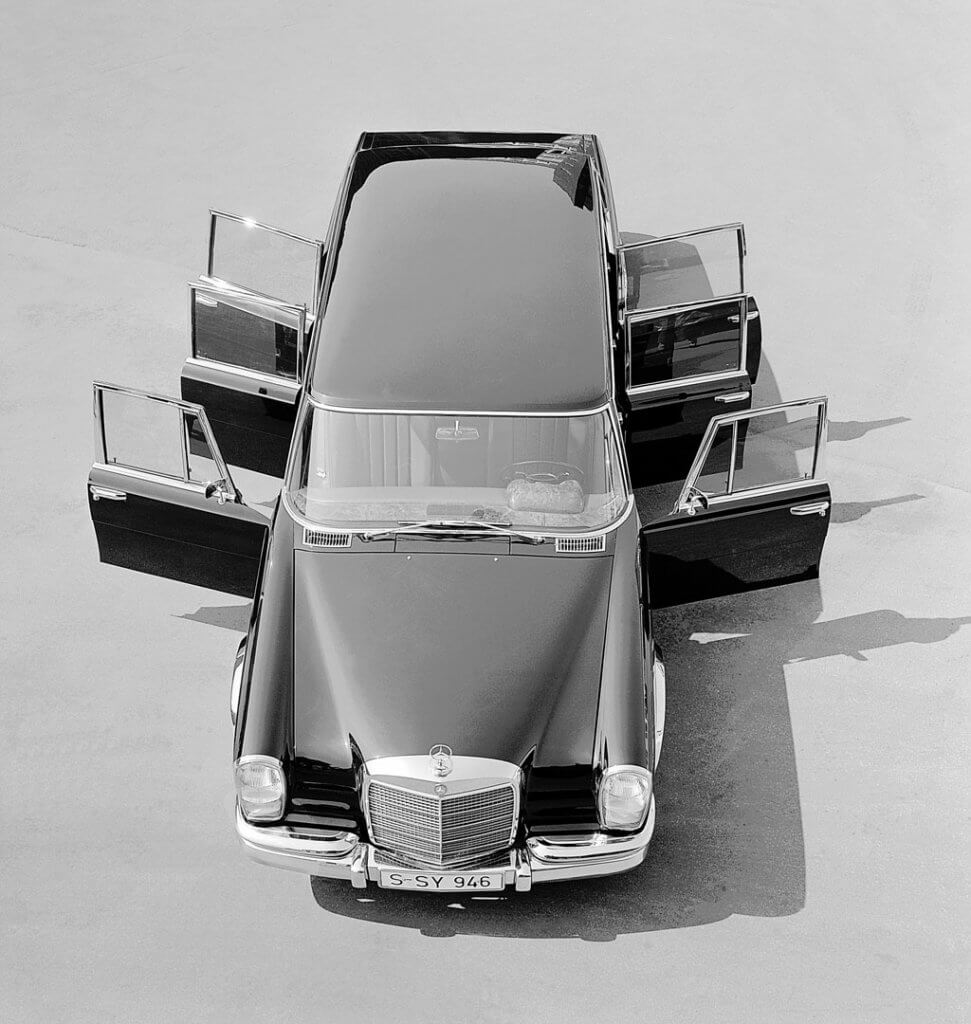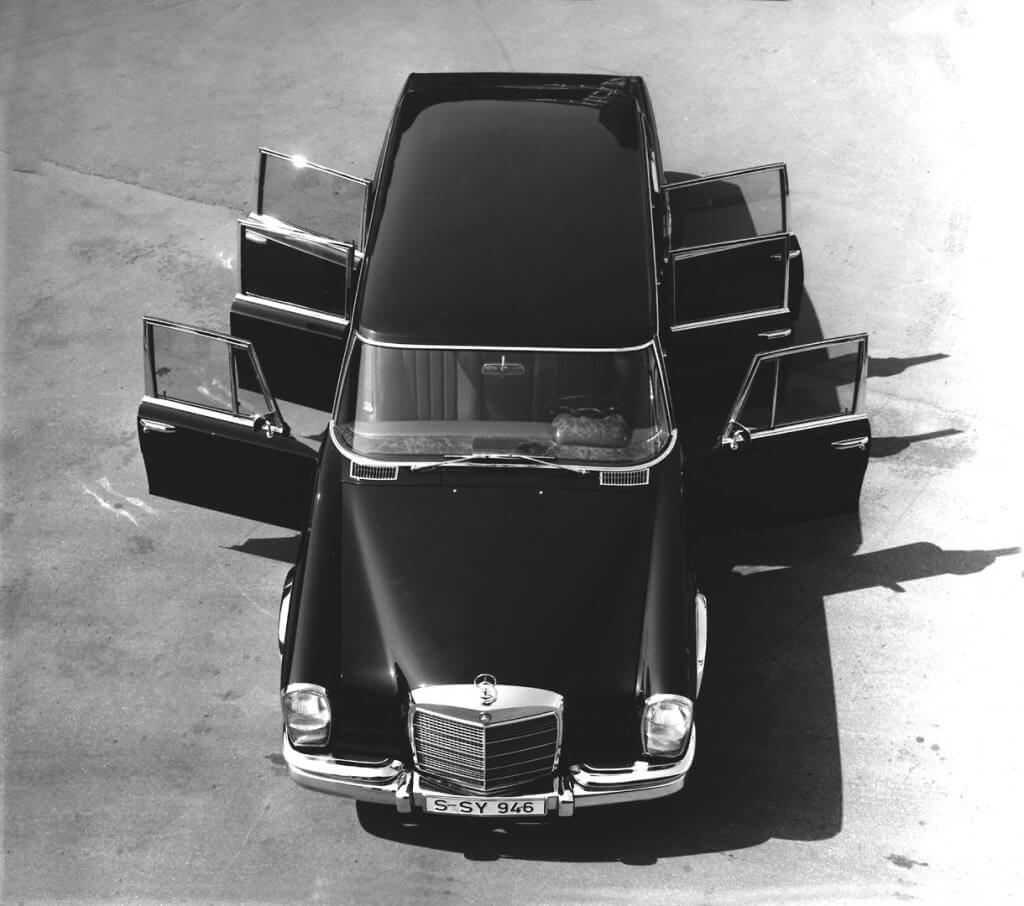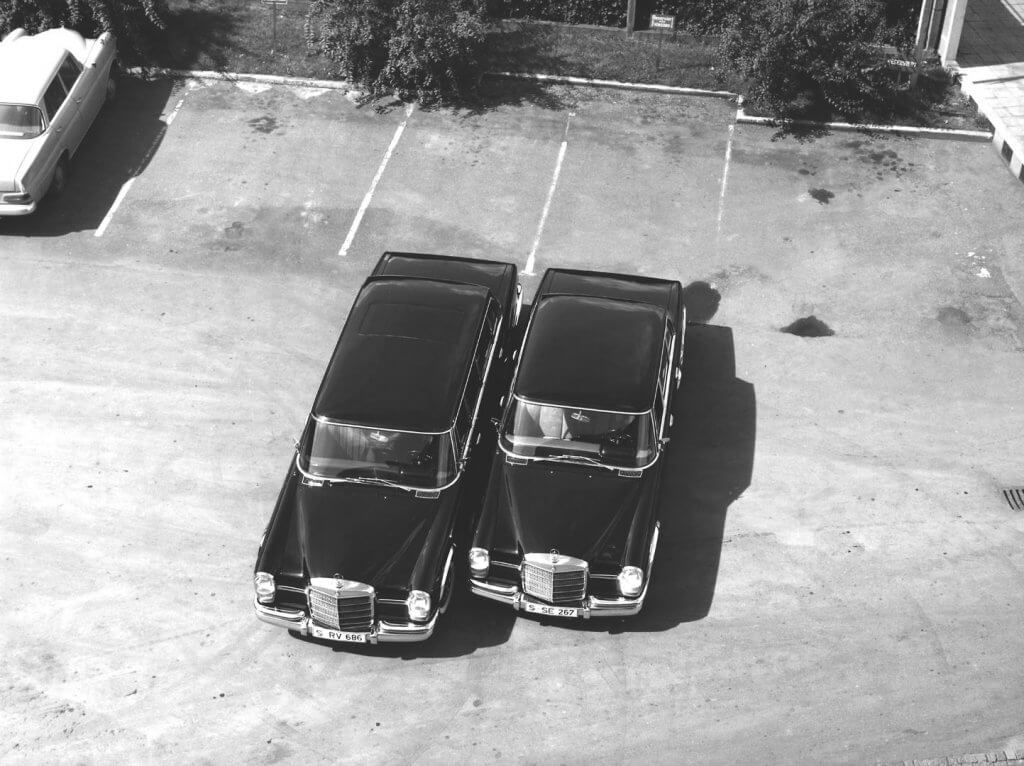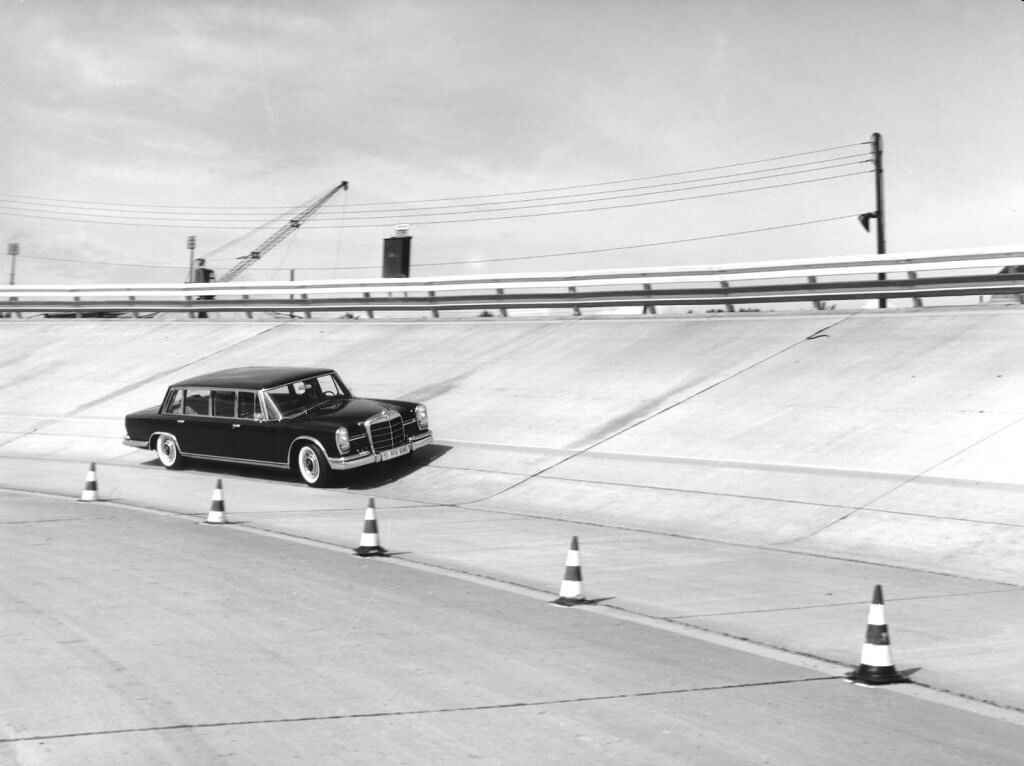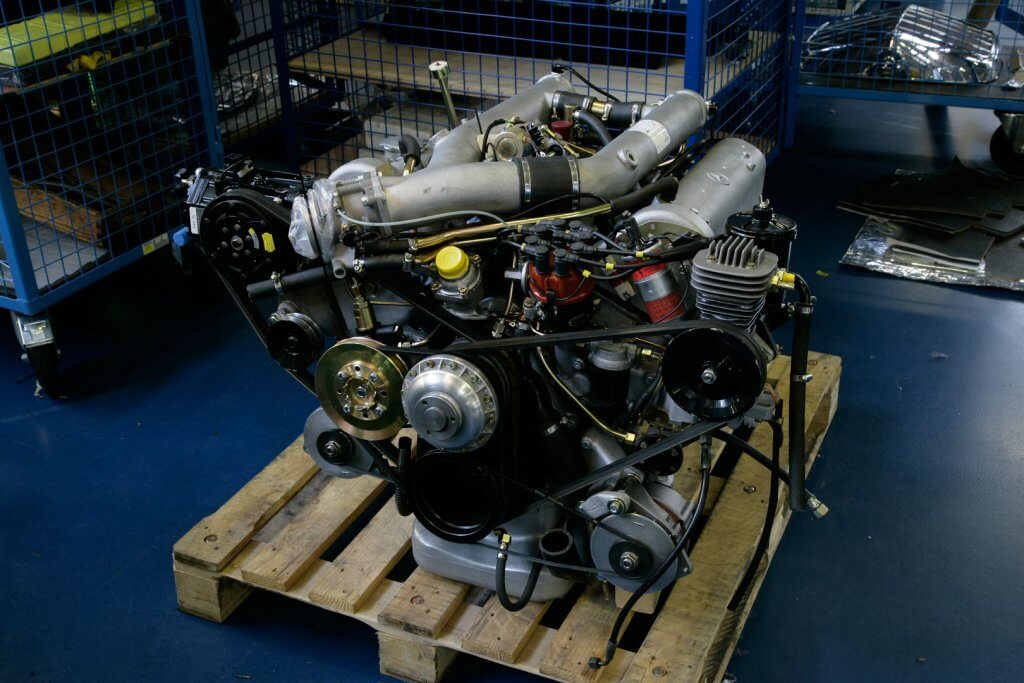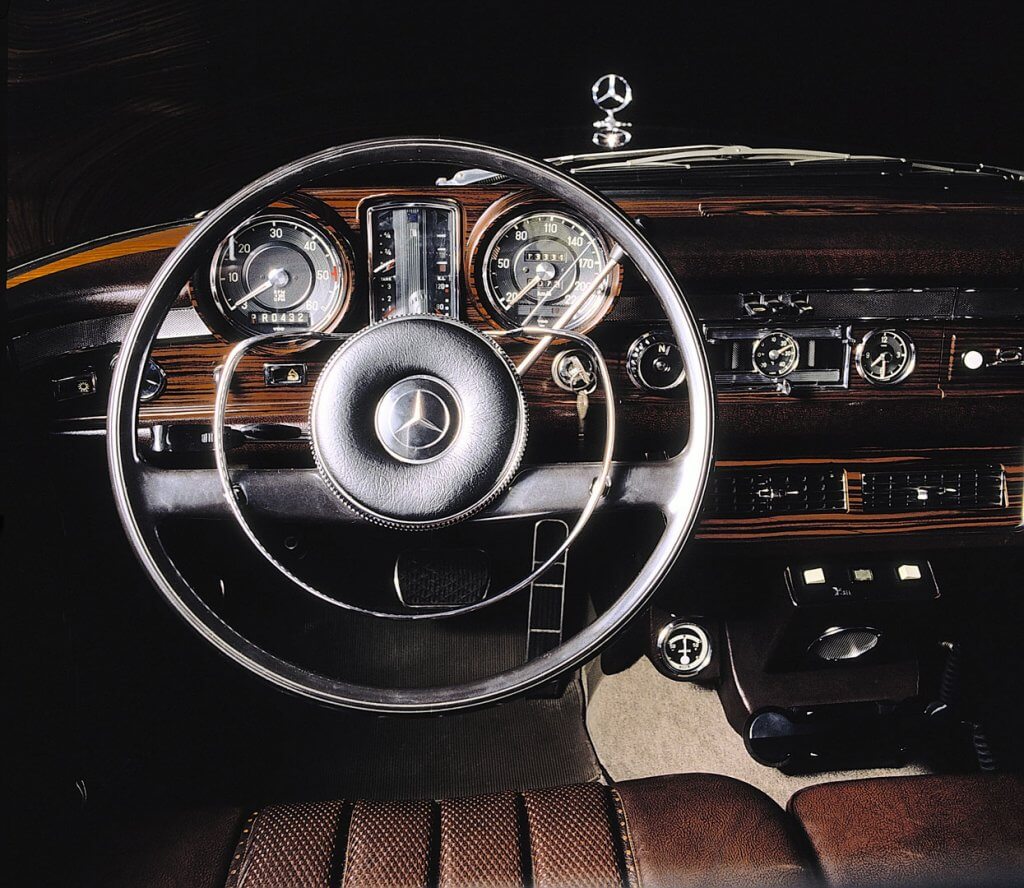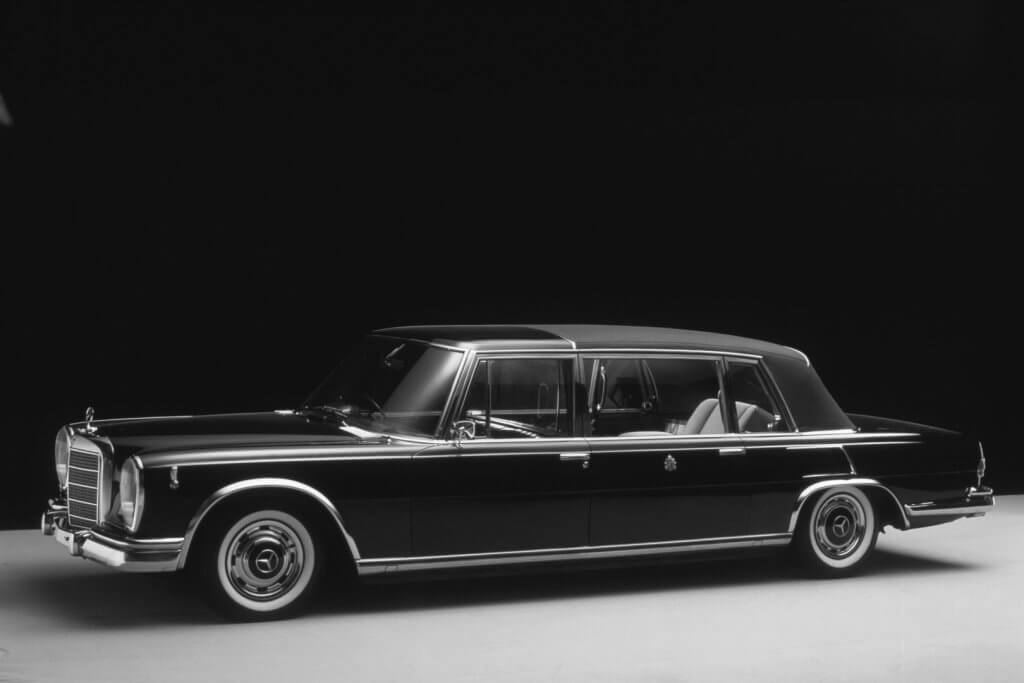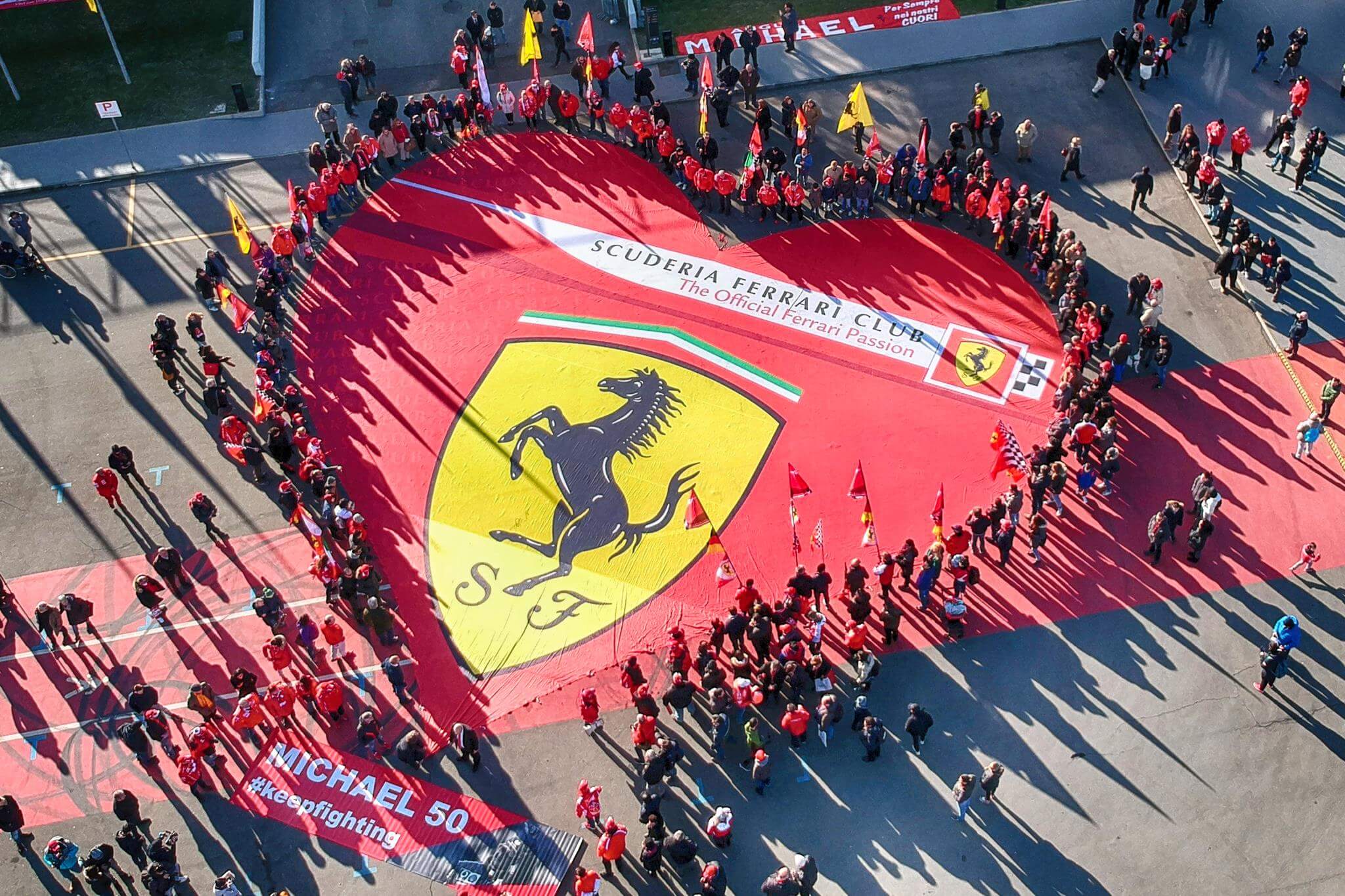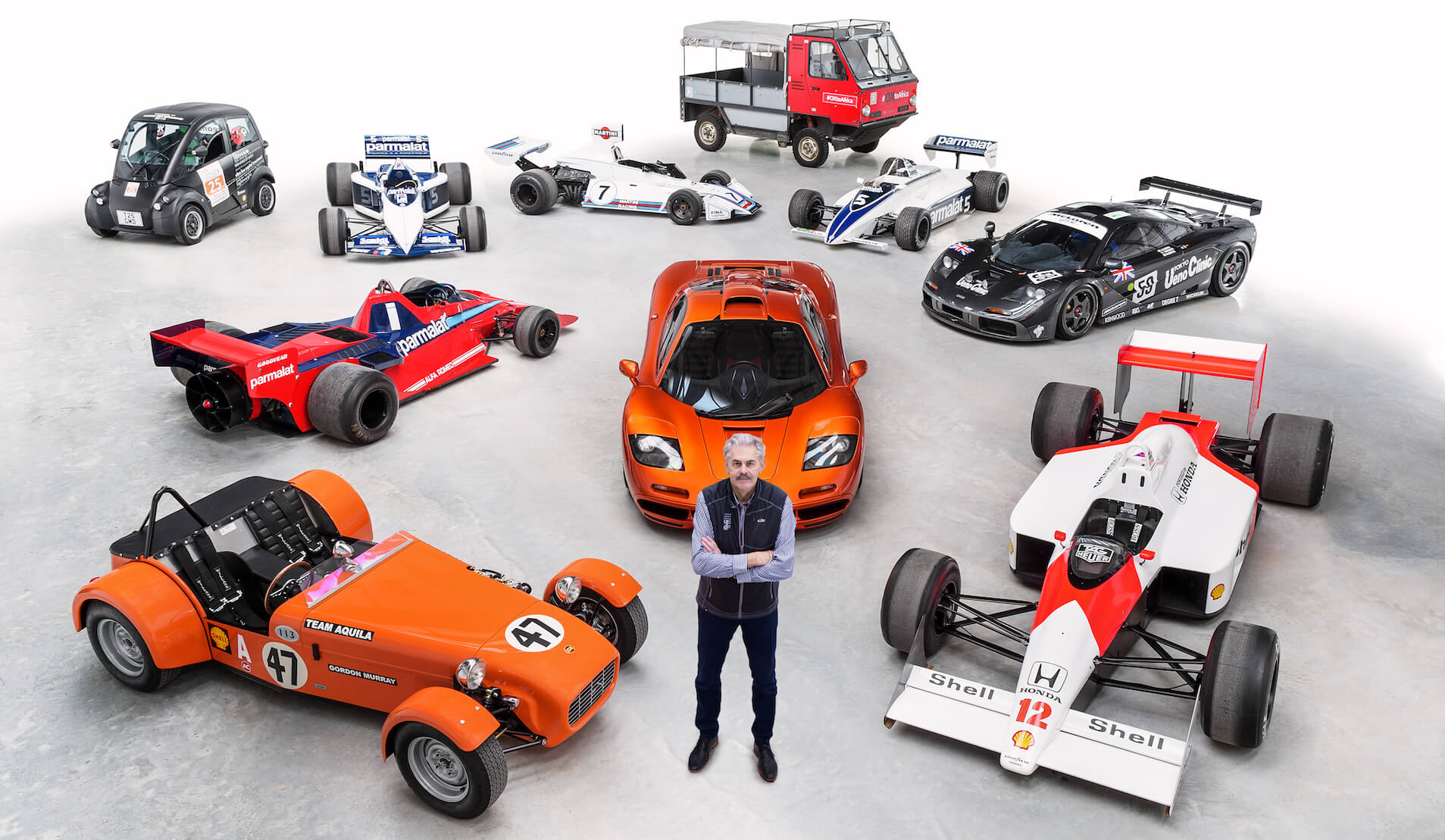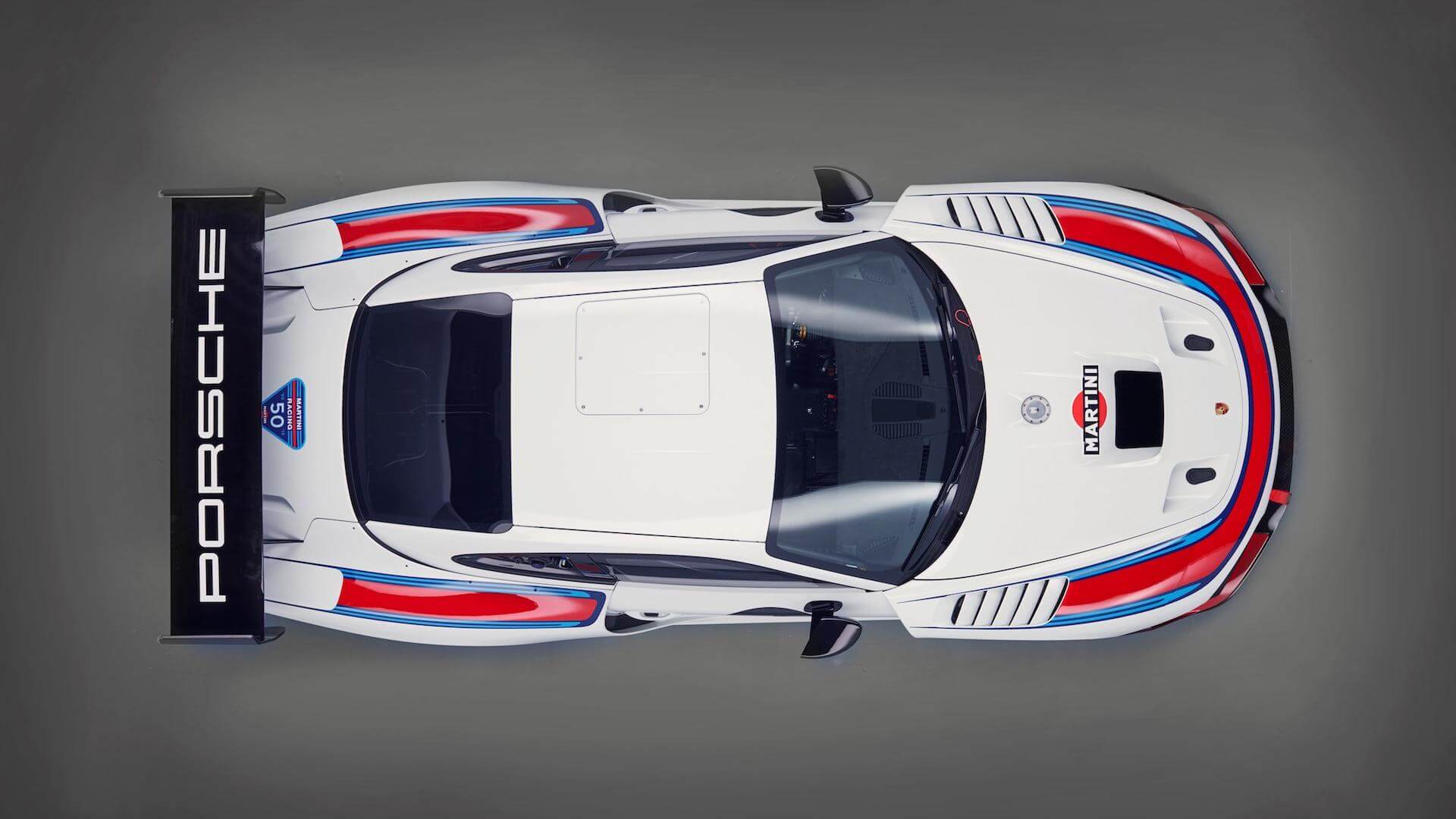The story of the long black Mercedes which served dictators, tyrants, presidents and celebrities with equal efficiency for many decades started in 1955 when the design and engineering work began. The Sindelfingen team were told to do their best, cost no object, and to produce an automobile of unparalleled quality.
„Der Große Mercedes“ was the title of the sales catalog published at the launch of the car, and despite what some uneducated Internet savants might tell you, it simply means “The Big Mercedes”. The car was supposed to continue the prewar tradition of majestic state limousines. Short-term profit was not the objective, but rather the association of the Mercedes brand with heads of state and top-level politics. The W100, as it came to be called internally, did not replace any existing model, nor was it directly replaced when its production ceased in 1981. IT not only commanded respect from the common man, but it also facilitated East-West detente and helped people like Willy Brandt, Chancellor of Germany, to establish a cohesive coexistence policy with the Soviet Bloc.
Heinz-Ulrich Wieselmann, the editor-in-chief of the German “Auto Motor und Sport” magazine, a born Berliner known for his critical eye and his acerbic wit, chose to describe the car using the following words, “One approaches the big black automobile with apprehension. No question, a Mercedes-Benz commands respect. Well-fed, heavy and perfect in every detail it stands on its huge 9.00 x 15 tires. Its elegance forces one to pull one’s hands out of one’s pockets when it arrives. Quite simply, it is the most interesting, the most advanced and the best car ever produced.” Such expressions of euphoria were not often seen in Wieselmann’s writing, but the experienced high-speed driver did not stop there, “Talking about the driving behavior of the big Mercedes, with a decidedly sporting driving style applied to it, we can only describe it, emphatically, as excellent. Most sports car manufacturers would like their little squirts to handle curves so fast, with such safety and composure as this three-ton vehicle. The driving comfort is unparalleled.” Strong words from a man not given to undue praise.
The passenger car development department at Daimler was run at that time by none other but Rudolf Uhlenhaut. He set three targets for his team while working on the new top-class vehicle: the highest possible ride comfort for passengers, the highest possible safety and excellent performance. They were the same premises on which its prewar predecessors were built; due to who rode in them prior to WWII and later until 1945, those premises had been, well, conveniently forgotten. Uhlenhaut, however, remembered them well. Times had changed. Before the war, such vehicles were predominantly ordered by individuals who wanted themselves to be seen in public, hence open-top versions constituted 67% of all production. After the war, dictators started to value their personal safety more, and leaders of democratic countries had no desire to be seen as power-hungry, therefore the Landaulet body with its open rear, perfect for parades, was only ordered by 22% of all clients. Landaulets were built on the LWB chassis with the notable exception of one SWB example, built at the request of Graf Berckheim, and full convertibles were never built at all. In general, the SWB cars were to be self-driven, and the LWB ones driven by chauffeurs. The longer chassis was available with four or six doors, and the frame for all variants was so designed that without alterations it had the stiffness sufficient for all types of bodies.
On the 28th of August, ten prominent European car journalists met in Val de Poix in Belgium, invited by Arthur Keser, the head of the Mercedes press department. These were: Robert Braunschweig, Bernard Cahier, Piero Casucci, Paul Frère, Hermann Harster, Jacky Ickx, Harry Mundy, Hans Patleich, Heinz-Ulrich Wieselmann and Gordon Wilkins. Don’t be surprised if you recognize some names… The welcome committee from Daimler consisted of Fritz Nallinger (development boss; the same guy who thought up a Mercedes bomber plane during the war), Rudolf Uhlenhaut, Josef Müller, Karl Wilfert and the aforementioned Arthur Keser. Uhlenhaut, in his perfect British English, told the guests about the main tenets of the new vehicle concept and about its development which had lasted 8 years. The reaction of the small, select group of journalists, some of whom were fantastically talented racing drivers, was overwhelmingly positive. The Swiss Robert Braunschweig commented that he had never expected Mercedes-Benz to come up with just such a vehicle. And Harry Mundy, the Brit, reported that he had nagged at Rolls-Royce for years, begging them to modernize their cars. His warnings had been ignored and now Rolls-Royce was forced to realize that Mercedes had come up with a car that was far above the standard that Rollses represented at the time.
Halfway through 1955 Nallinger wrote a brief containing the parameters for a car based on the “C-type” chassis, thus explaining his ideas: “This platform will serve the future long-distance touring car and state limousine. It has a standard automatic gearbox, power-assisted steering, and power-assisted brakes. Normally it is a 6-seater. The design of the body frame is such that it can be lengthened to produce a vehicle with 3 rows of seats.” In February 1956 Nallinger voiced his visionary idea of an aluminum V8 engine with a capacity of 6 liters, but at the beginning of the R&D work on the new M100 engine, the capacity was actually 5 liters. The first fully functioning prototype of the new V8 motor ran on a dyno at the close of 1959. During the course of testing the capacity was enlarged in two stages, first to 5.8 and later to 6 liters, to be finally established at 6.33 liters and a power output of a relatively modest 250 horsepower. The increases in capacity and power output were necessitated by the parallel development of the frame and bodywork, where a constantly growing level of equipment meant more weight and the need for more thrust. The first three-engine prototype generations were made of aluminum with cast iron cylinder liners, but the block had to be made in cast iron too for the final iterations, as bore could not be increased in aluminum without sacrificing reliability. The planetary gear set of the 4-speed automatic transmission grew from 3 to 6 planetary gears due to the massive increase in torque. Interestingly, Nallinger was looking at another engine option back in 1956, namely a 7.5-liter V12. Technical drawings by Adolf Wente from 1957 prove that this was not just a pipe dream, but a sound concept which was being assessed. Nallinger used the 6.4 and 6.7 Cadillac and Chrysler engines as benchmarks.
The standard engine was incredibly smooth and powerful, at 100 kph (62 mph) it was turning over at 2400 rpm, and its rev limit was 4800 rpm. It drove the rear wheels via a newly developed 4-speed automatic, with a hydraulic fluid coupling instead of the expected torque converter (it was later also used on smaller cars). A fluid coupling offered no torque multiplication but with this engine this was not necessary, given over 500 Nm of torque available. The driveline efficiency was better with no-slip (98%) than with a converter. The engine had some unusual devices fitted to it which facilitated using the car in the circumstances for which it had been created. One was the hot starting aid, necessary as principals do not like to wait embarrassing minutes while their car refuses to start. Another was the high-speed idle switch (increasing it to 1200 rpm) for increased aircon efficiency when stationary; at normal idle, there was not enough coolant pressure at low rpm to operate the air conditioning unit at peak efficiency, and there were additional electric blowers on the condenser as well (the aircon unit was so good that the one in the Maybach 62 was benchmarked against it several decades later). The high speed idle would activate only with the gear selector lever in the P position, and the gearshift remained locked when the high-speed idle function was engaged. Even with the car at a standstill, the engine had to cope with a heavy load: it drove 7 auxiliaries via 7 belts. It took a whole day to replace all the belts.
